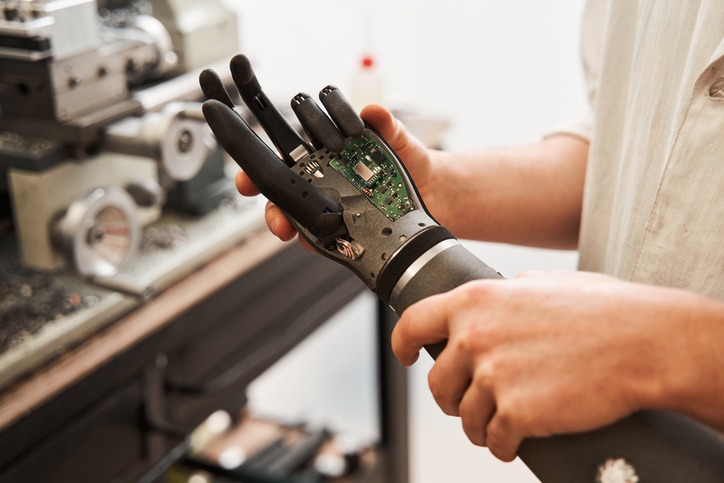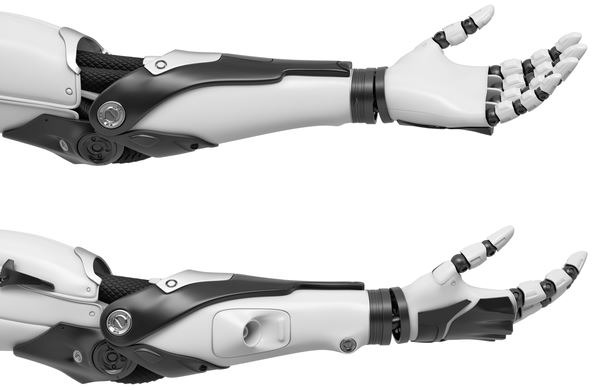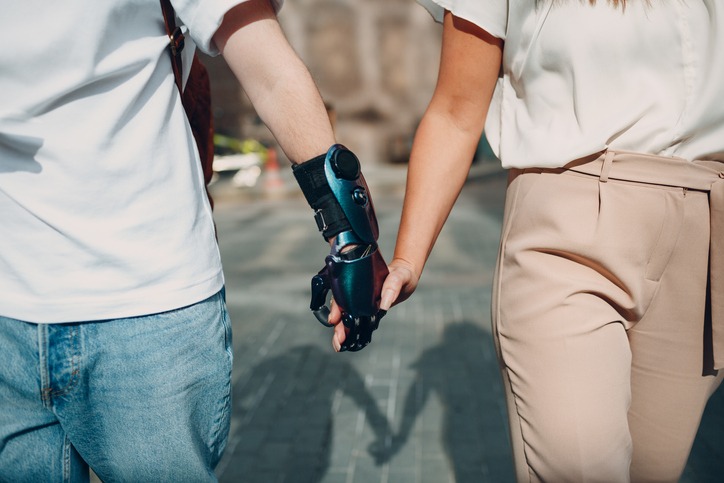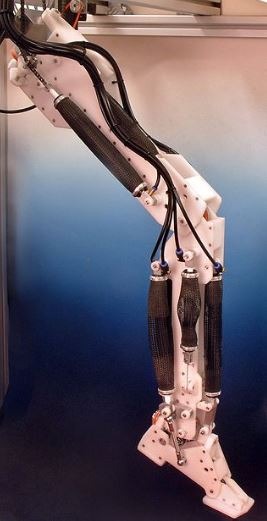Prosthetics is the ultimate refuge for people who have an upper-limb amputation. However, engineers and researchers continue to innovate so that people will both have the mannequin-like appendages and bionic limbs.
The demand for neuroprosthetics has increased with the advancement of robotics technology.
Neuroprosthetics, which cost tens of thousands of dollars, provides the potential “to substantially increase the quality of life for people suffering from motor disorders, including paralysis and amputation.”
“Such devices translate electrical neural activity from the brain into control signals for guiding paralyzed upper limbs, prosthetic arms, and computer cursors,” said P.Y. Chhatbar and S. Saha of Science Direct.
This robotics technology is designed so that a user can experience residual muscle signals while its robot parts mimic the intended motions.
The robotic devices transform electrical neural activity from the brain into control signals to guide paralyzed upper limbs and prosthetic arms.
Since the price for Neuroprosthetics is high, the Massachusetts Institute of Technology (MIT) and Shanghai Jiao Tong University engineers have come up with a lightweight, soft, and potentially cheaper neuroprosthetic hand.
“Amputees who tested the artificial limb performed daily activities, such as zipping a suitcase, pouring a carton of juice, and petting a cat, just as well as — and in some cases better than —those with more rigid neuroprosthetics,” said tech writer Jennifer Chu of MIT.
The modern robotics system design is guaranteed durable and coupled with tactile feedback mechanisms. This robotic hand is elastic, soft, and weighs around half a pound. The total components cost is about $500.
“This is not a product yet, but the performance is already similar or superior to existing neuroprosthetics, which we’re excited about,” said Xuanhe Zhao, MIT professor of mechanical engineering.

“There’s huge potential to make this soft prosthetic very low cost, for low-income families who have suffered from amputation,” Zhao added.
Considering that robot cannot have similar behavioral awareness and control, the advanced robotics system needs careful coordination and planning.
This development also paved the way for scientists from MIT’s Computer Science and Artificial Intelligence Laboratory to make a new algorithm to assist a robot in getting an efficient motion direction for the user’s safety.
As a design, the robot helped by putting a “jacket” on a human counterpart to expand its response.
“Developing algorithms to prevent physical harm without unnecessarily impacting the task efficiency is a critical challenge,” said MIT PhD student Shen Li.
“By allowing robots to make non-harmful impact with humans, our method can find efficient robot trajectories to dress the human with a safety guarantee,” the lead author of the research paper said.
According to Rachel Gordon of MIT News, robot-assisted dressing “could aid those with limited mobility or disabilities.”
“Proper human modeling — how the human moves, reacts, and responds — is necessary to enable successful robot motion planning in human-robot interactive tasks. A robot can achieve fluent interaction if the human model is perfect, but in many cases, there’s no flawless blueprint,” she said.
As robotics technologies for amputees developed, another inventor and professor at the University of Texas at Dallas also used “robot control theory” to make powered prosthetics to efficiently respond to the user’s environment and help amputees walk.
“We borrowed from robot control theory to create a simple, effective new way to analyze the human gait cycle,” said Dr. Robert Gregg, lead author of the research paper.
“Our approach resulted in a method for controlling powered prostheses for amputees to help them move in a more stable, natural way than current prostheses,” he added.
The design of robotic legs, or powered prostheses, is equipped with motors to generate power.
“Humanoid robots can walk, run, jump and climb stairs autonomously, but modern prosthetics limit similar actions in humans. While prosthetics have been made lighter and more flexible, they fail to mimic the power generated from human muscles in able-bodied individuals,” Gregg said.
Since human’s gait is complex with its muscles and joints working together, Gregg designed the robotic leg using advanced mathematical theorems “to simplify the entire gait cycle down to one variable.”
“If you measure that variable, you know exactly where you are in the gait cycle and exactly what you should be doing,” the inventor-professor said.
He tested his theory on computer models, followed with actual usage of above-knee amputee participants at the Rehabilitation Institute of Chicago.
Using algorithms with sensors, he measured the center of pressure on a powered prosthesis.
“We did not tell the prosthesis that the treadmill speed was increasing. The prosthesis responded naturally just as the biological leg would do,” the inventor said.

An article from Kurzweil library said that Gregg’s participants reportedly exerted minimal energy compared with their traditional prostheses.
The users “were able to move at speeds of more than 1 meter per second; the typical walking speed of fully able-bodied people is about 1.3 meters per second.”
At the University of Chicago Medical Center, neuroscientists have also found out that the application of technology can help amputees learn to control a robotic arm through electrodes implanted in the brain.
“That’s the novel aspect to this study, seeing that chronic, long-term amputees can learn to control a robotic limb,” said Nicho Hatsopoulos, PhD, professor of organismal biology and anatomy at the University of Chicago.
“But what was also interesting was the brain’s plasticity over long-term exposure, and seeing what happened to the connectivity of the network as they learned to control the device,” he added.
Previously, some research and experiments have shown how a paralyzed person can move robotic limbs through a brain-machine interface.
According to ScienceDaily, the new research is one of the first to test the viability of these robotics technologies in amputees.
The research proponents first used three rhesus monkeys who suffered injuries and have an arm amputated.
“In two of the animals, the researchers implanted electrode arrays in the side of the brain opposite, or contralateral, to the amputated limb. This is the side that used to control the amputated limb. In the third animal, the electrodes were implanted on the same side, or ipsilateral, to the amputated limb. This is the side that still controlled the intact limb,” the report said.
After recording the activity of neurons where the electrodes were placed, the researchers discovered some progression in the monkeys’ activities.
“That means connections were shedding off as the animal was trying to learn a new task, because there is already a network controlling some other behavior,” said Karthikeyan Balasubramanian, PhD, who led the study.
“But after a few days it started rebuilding into a new network that can control both the intact limb and the neuroprosthetic,” she added.
With the aid of robotics technology, the researchers hoped that they can “create truly responsive neuroprosthetic limbs, when people can both move it and get natural sensations through the brain-machine interface.”


